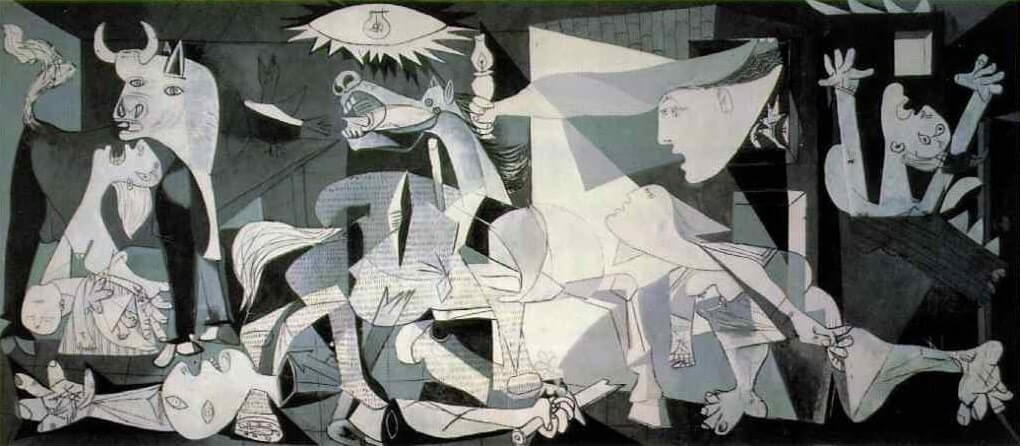
Imagine a society which does not have an established medium of painting but does produce a kind of work called guernicas. Guernicas are like versions of Picasso’s ‘Guernica’ done in various bas-relief dimensions. All of them are surfaces with the colors and shapes of Picasso’s ‘Guernica,’ but the surfaces are molded to protrude from the wall like relief maps of different kinds of terrain. Some guernicas have rolling surfaces, others are sharp and jagged, still others contain several relatively flat planes at various angles to each other, and so forth. Picasso’s ‘Guernica’ would be counted as a guernica in this society — a perfectly flat one — rather than as a painting. Its flatness is variable and the figures on its surface are standard relative to the category of guernicas. Thus the flatness, which is standard for us, would be variable for members of the other society … and the figures on the surface, which are variable for us, would be standard for them. This would make for a profound difference between our aesthetic reaction to ‘Guernica’ and theirs. It seems violent, dynamic, vital, disturbing to us. But I imagine it would strike them as cold, stark, lifeless, or serene and restful, or perhaps bland, dull, boring — but in any case not violent, dynamic, and vital. We do not pay attention to or take note of ‘Guernicas”s flatness; this is a feature we take for granted in paintings, as it were. But for the other society this is ‘Guernica”s most striking and noteworthy characteristic — what is expressive about it. Conversely, ‘Guernica”s color patches, which we find noteworthy and expressive, are insignificant to them.
— Kendall L. Walton, “Categories of Art,” Philosophical Review (1970), 334-367
